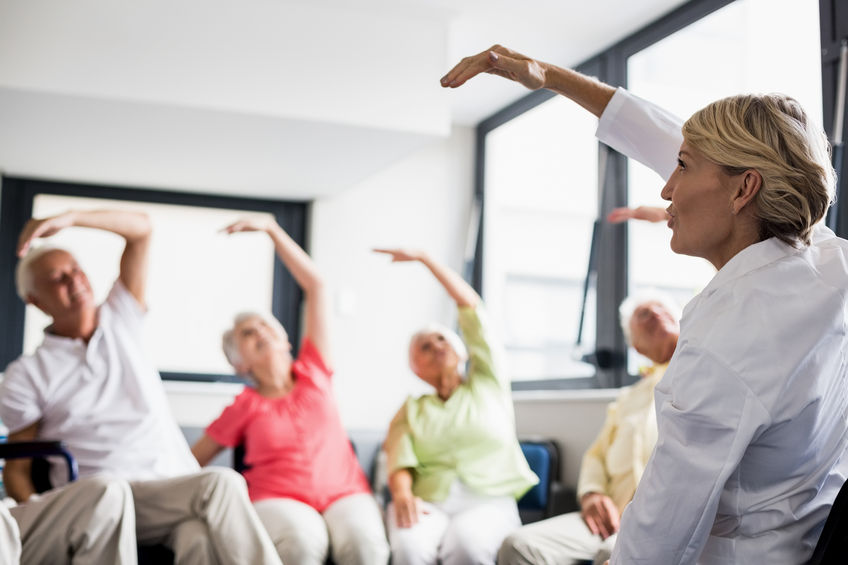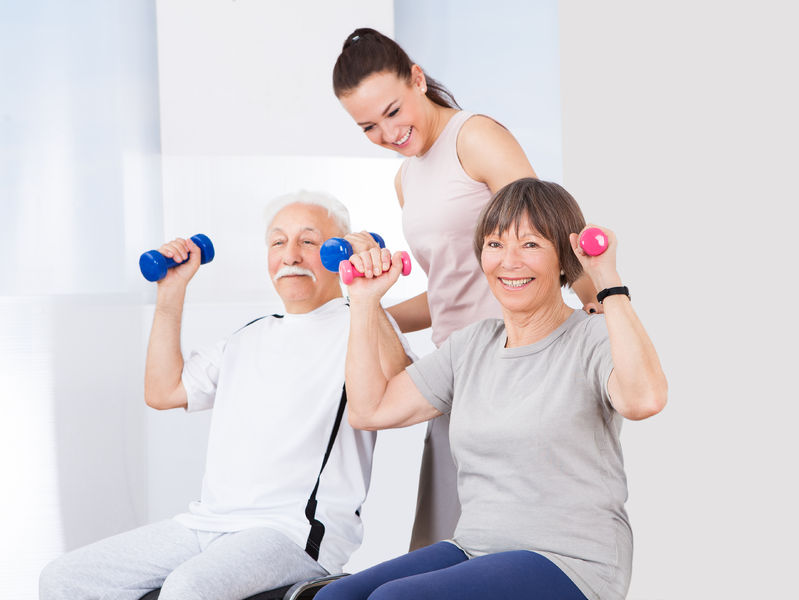Exercise is well known to be beneficial for bone health. That’s why today I want to share with you 4 easy exercises you can do at home with minimal equipment.
Exercise in postmenopausal women and men over 50 has been shown to:
- Minimize bone loss and possible reduce the risk of broken bones
- Increase muscle strength
- Improve balance
- Improve your sense of wellbeing
- Improve cognitive (brain) function
- Make you better able to carry out daily tasks and activities
- Maintain or improve posture
- Relieve or decrease pain associated with other conditions such as osteoarthritis
- Reduce risk of falls
- Reduce risk of many medical conditions
Now there’s a few things to keep in mind before starting new exercises. It is important not to rush into new activities too quickly and to become familiar with the movements slowly and safely first. Also, exercise must be done regularly to have any benefits. The general recommendation is 30 minutes, 5 days a week. The important thing here is a little every day is better than doing a lot only one day.
4 Easy Chair Exercises for Osteoporosis
The 4 exercises I am sharing with you today are designed for people at high risk of fracture or who may have broken bones already but they are beneficial for all. If you are at high risk of fracture, avoid high-impact, fast-moving exercises such as jumping, running, jogging or skipping as well as exercises where you bend forwards and twist your waist such as touching your toes or doing sit-ups. These movements put pressure on the bones in your spine and may increase your risk of compression fractures.
Important note: Please double check with your doctor or physical therapist before starting any new exercises.
You can read the descriptions below and watch the demonstration in this video:
1. Flamingo Swing
Exercises that improve the strength of our leg muscles can also help to reduce the risk of falling. Stand tall putting your weight onto your support foot and use the chair for balance. Bring the leg furthest from the chair forwards and back with control. Perform 10 swings. Turn and repeat on the other leg. Exercises that improve the strength of our leg muscles can also help to reduce the risk of falling. Simply rising from a chair (without the use of your hands, if possible) and repeating 10 times can help to strengthen the thigh muscles if done regularly.⁵
2. Marriage Proposal Lunge
This lunge builds strength in the legs, promotes hip extension and stimulates bone in the hips. For this lunge, you start in a standing position holding on to the chair (or a wall) next to you for balance if needed. Step forwards and kneel down to achieve a 90 degree angle in your forward knee.
3. Ball Behind Back
This is a form of thoracic extension if unable to get down to the floor. Use an 8 inch ball or 6 by 36 inch foam roller. Place ball or foam roller behind back and against chair. Arch back backwards around ball and back into a straight position. This mobilizes the often stiff joints of the thoracic spine (upper and mid back area), stretches the pectoral muscles across the front of the chest, and challenges the abdominals. Make sure to breathe in and use this to relax and relieve stress.
4. Leg Press
Another useful exercise for improving leg strength is performed using an exercise resistance band. They are cheap and easy to find at your local pharmacy, gym or sports clinic. For this exercise sit tall at the front of your chair, place the band under the ball of one foot and grasp it with both hands at knee level. Lift your foot off the floor, then pull your hands to your hips. Now press your heel away from you until your leg is straight and your heel is just off the floor. Hold for a slow count of five, then return to the starting position. And repeat 6–8 times on each leg.
Did you know that not all forms of exercise stimulate bone growth? Two examples are swimming and cycling for example as they are not weight-bearing. Although they are wonderful for improving heart and lung function and for overall physical health, they do not significantly increase bone density.
The greatest concern related to osteoporosis is the increased risk of fracture and accompanying high rates of mortality and morbidity. Of particular concern is hip fracture. Did you know that women have a one in six lifetime risk of having a hip fracture?¹ Approximately 80–90% of hip fractures in older adults are related to falls.²⁻³ Among hip fracture patients, there’s a 50–70% chance that they will not return to their previous functional status and many are admitted to long-term care.⁴ In adults with low bone density, exercise can help decrease fracture risk by maintaining or improving bone density and improving balance.¹
Bone is the frame that supports the body against the forces of gravity and resists the pull of muscles to allow movement. The forces and loads applied ensure that our skeleton remains able to resist everyday tasks imposed upon it, like picking up a grocery bag or opening a window. Did you know that bone is a living tissue? It constantly reacts to increases in loads and forces by growing stronger. The important part here is “increases in loads” because exercise will only increase bone strength if it increases the loading above normal levels.⁵

If you are new to exercise or thinking of starting a new type of exercise, choose an activity that is compatible with your lifestyle and current physical activity status, that you enjoy and that is effective for increasing bone strength.
I hope you’ve enjoyed this post and that some of these exercises help you. I’ll have another post on seated exercises for osteoporosis very soon too, so watch out for that!
Let us know what you think of these exercises in the comments below.
Sources:
- Brown J, Josse R. Scientific Advisory Council of the Osteoporosis Society of Canada. 2002 clinical practice guidelines for the diagnosis and management of osteoporosis in Canada. CMAJ. 2002;167(10 suppl.):S1–34.
- American Geriatrics Society, British Geriatrics Society, American Academy of Orthopaedic Surgeons. Guideline for the prevention of falls in older persons. American Geriatrics Society, British Geriatrics Society, and American Academy of Orthopaedic Surgeons Panel on Falls Prevention. J Am Geriatr Soc.2001;49:664–72. [PubMed]
- Kanis JA, McCloskey EV. Evaluation of the risk of hip fracture. Bone.1996;18(suppl.):127–32S. [PubMed]
- Health Quality Council. Saskatchewan seniors experiencing hip fracture: characteristics and health outcomes. Summary report. Saskatoon: The Council; 2003.
- National Osteoporosis Society. Exercise and osteoporosis: How exercise can help with bone health, fragile bones and fractures. 2014;2-46.





Linda
September 16, 2016 , 7:25 amThe exercises look helpful. I have double partial knee replacements and need exercises that I don’t have to kneel down.